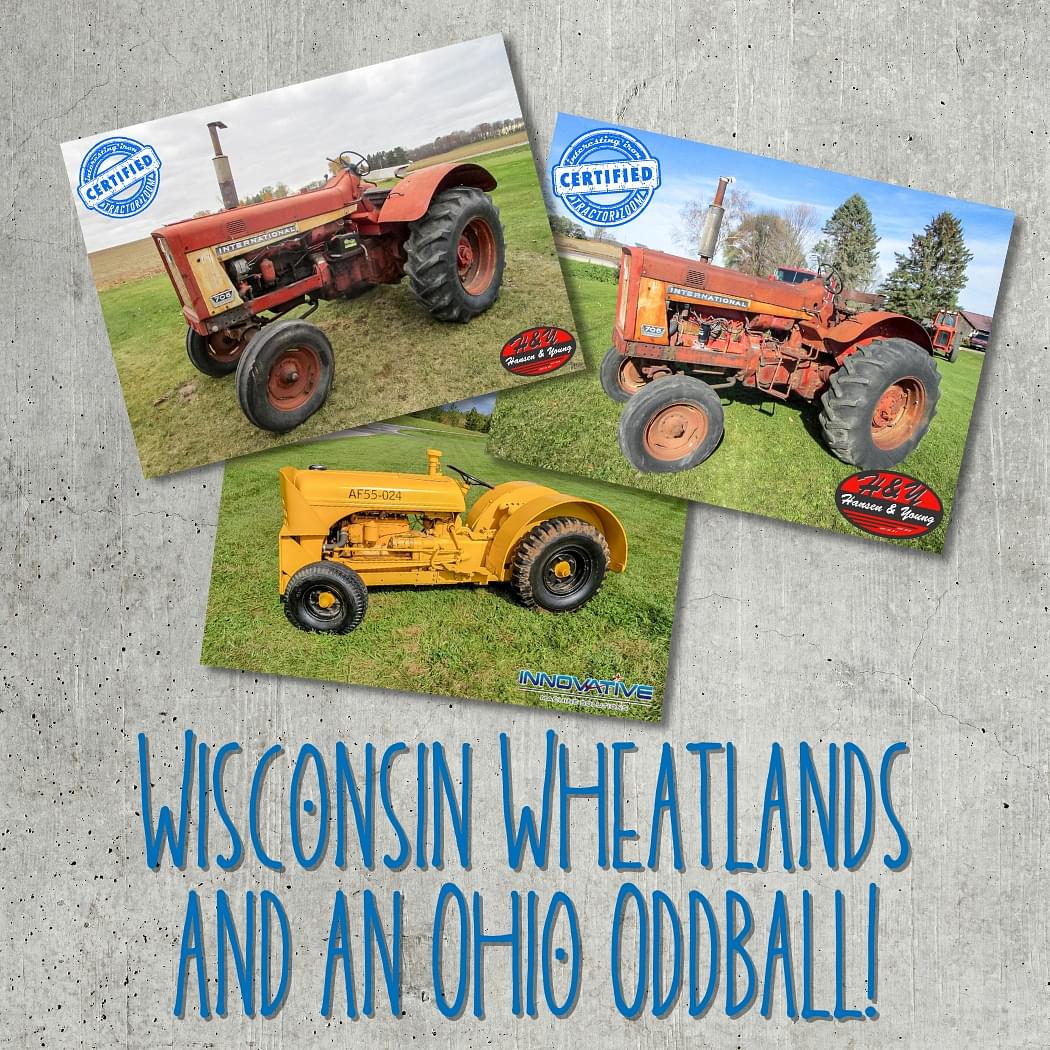
INTERESTING IRON
Wisconsin Wheatland tractors and an Ohio oddball…
Ryan Roossinck
November 11, 2021

November and December are usually pretty busy when it comes to tractors at auction, and this year looks to be no different. End of year auction lineups are starting to pop up, and we think this year may be one like no other. Equipment shortages and price hikes across the board will inevitably have farmers watching Tractor Zoom like never before. (We hope so, at any rate!)
From my perspective, though, it’s always fun to see what rolls out of the barn as sellers get motivated. This week didn’t disappoint, either. There’s a lot of interesting tractors coming across the block right now.
That said, let’s dig in!
The Wisconsin Wheatland tractors
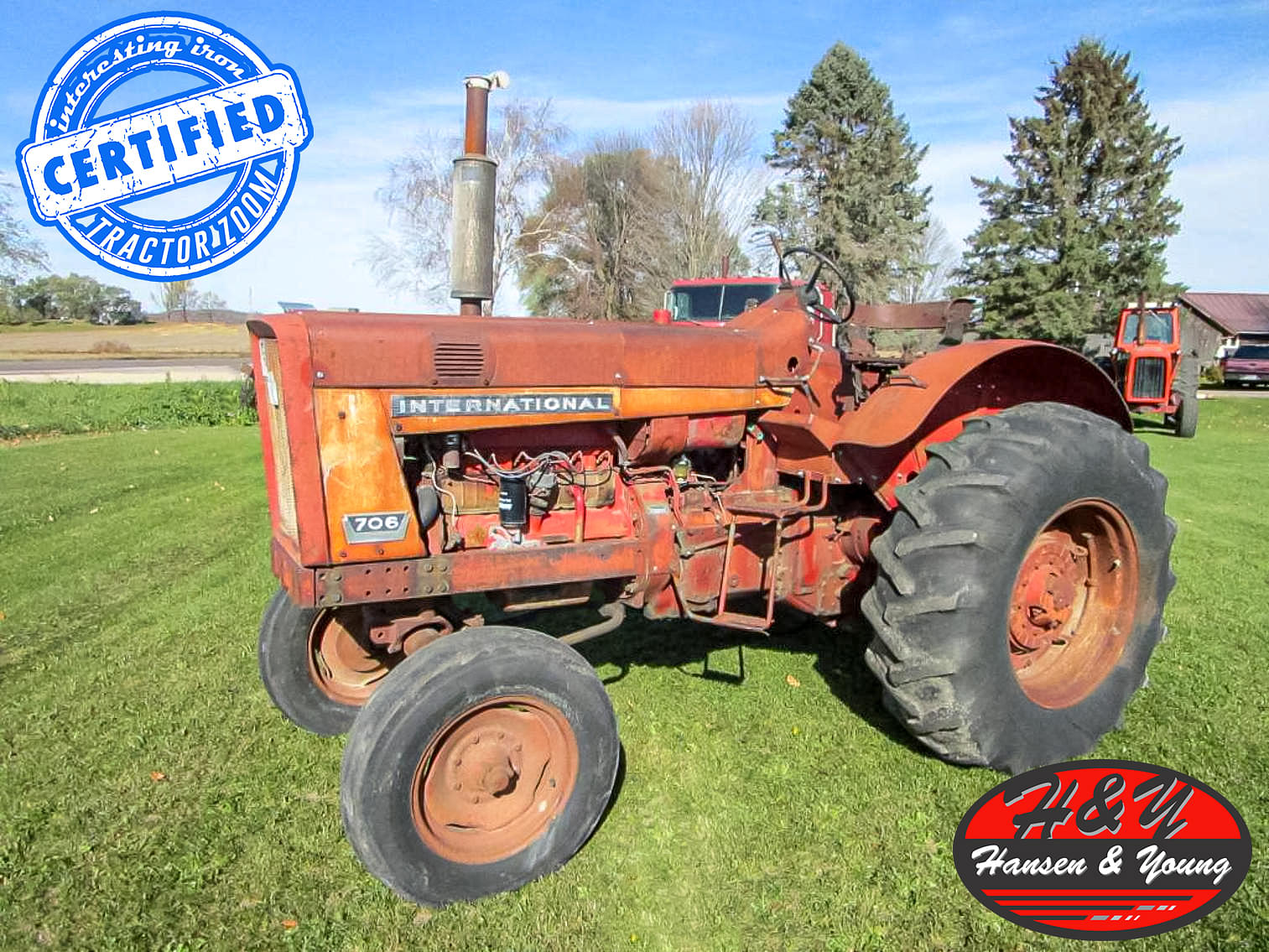
First things first (and this is for the purists); I know it’s technically a Standard, not a Wheatland. Put away the pitchforks and torches… ????
The story of the -06 tractors is one of my favorite Harvester stories of all time. I wrote about it at some length here. Basically, here’s the gist. The 460/560/660 release in the late fifties was a colossal flop in the public eye, because bad news travels fast. It’s not that they were bad tractors, but there were a few early ones that had some issues with rear end failure. I fully believe that the problem was blown out of proportion, thanks to the telephone. Like I said, bad news travels fast.
At any rate, Harvester was a little salty about the whole thing, and it showed in the way they designed the 706/806. The top brass essentially locked the engineers in a room and told ’em not to come out until they had a recipe for the world’s toughest tractor. Clearly, IH had a chip on their shoulder and point to prove.
The engineers delivered, too. The 706 and 806 were built for business. By the time they hit the market in 1963, the fleet of test mules had been tested for nearly 75,000 hours.
Both tractors sold very well during their four year production run. All tolled, Harvester turned out close to 52,000 706s!
The rare one in Wisconsin…
The lion’s share of 706s were diesels. Early production got the D282, later got the German-built 310 diesel. Gas-powered 706s initially used the C263, but later on got a bigger C291. Horsepower for both was rated right around 89.
This one in Wisconsin is a pretty uncommon variant, though. It’s a very early IH (not Farmall) 706 Wheatland that’s gas-powered. Harvester didn’t make many of these at all. According to the seller (a noted red collector), this is one of 210 built. Furthermore, based on the serial number (1831-Y – it’s a factory T/A delete), it could easily be one of the very first Wheatland gassers the factory ever turned out! I checked the build records with the Wisconsin Historical Society and this tractor was likely built in the afternoon on April 30, 1963.
The tractor is pretty much all-original, too. Dual-speed PTO, wide-swing drawbar, no 3-point, and a single hydraulic hookup. If I had to guess, this tractor probably came from somewhere out west like North or South Dakota. 3864 hours on the tach!
706 gassers were known for being pretty thirsty tractors, but just like their bigger brother, they’re also pretty stout. As far as value, I’d imagine that this is somewhere in that $5-6K range. They’re uncommon, but that doesn’t always mean crazy high value. We’ll see what happens when the hammer falls on Monday!
BTW – If you wanted a complete set of 706 Wheatlands, there’s a 706 Wheatland diesel on this sale too. You may as well just buy ’em both together and be done with it. It’s easier that way, y’know? ????
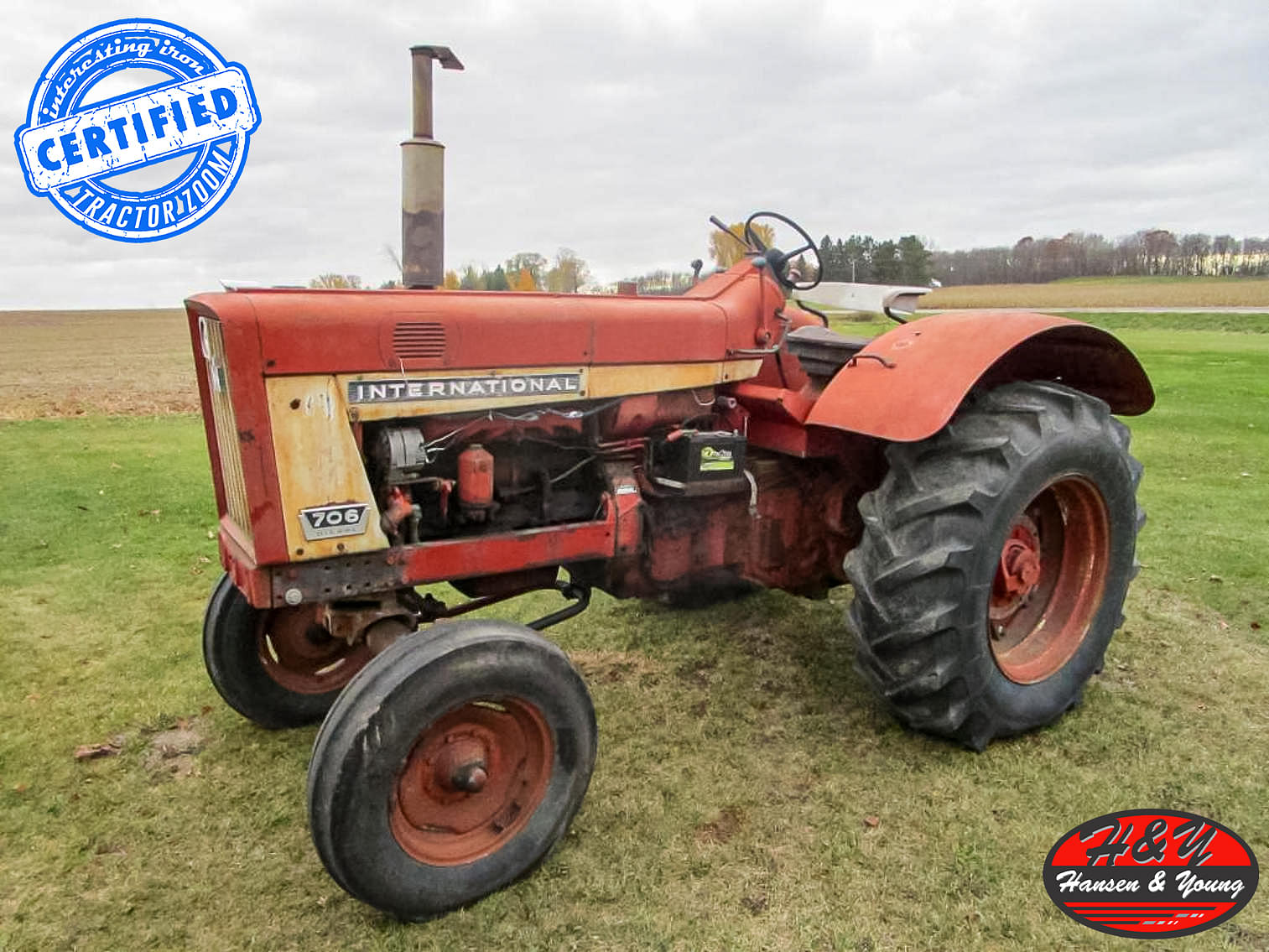
Details:
Auction Date: Ends November 15, 2021
Location: Ellsworth, WI
Auctioneer: Hansen & Young, Inc.
Auction Listing on Tractor Zoom (all assets)
The Ohio Oddball…

This is a neat little thing, as far as I’m concerned, and they played a pretty significant role in American history during WWII.
Meet the Ford Moto Tug. It’s a neat little tractor that Ford built for the government during the 1940s to tug aircraft around airfields as well as carrier-class warships. There were two models of these tugs – the BN0-25 and the BN0-40, but the only obvious difference was the wheels. The BN0-25 had a single rear wheel, the BN0-40 had duals.
They were based on the 8N for the most part, but with some fairly major differences. The tractors sat lower to the ground, and obviously the fenders and swoopy bodywork are different. However, Ford also added about 1200 pounds of plate steel to the BN0-25 and a whole bunch more to the BN0-40. Furthermore, they stripped the tractors of hydraulics and 3-point hitch in favor of a pintle hitch on the back. After all, these pint-sized tractors only had one job; move airplanes. Airplanes don’t need any of that extra stuff. Other changes included a handbrake (so a soldier could lock the tug in place on the flight deck in potentially stormy seas) and hydraulic brakes on the rear.
These little tractors were pretty darn handy, and they punched WAY above their weight class. That B-24 you see in the picture below? That thing weighs just about 33,000 pounds empty, and could weigh as much as 64,000 pounds when fully loaded!
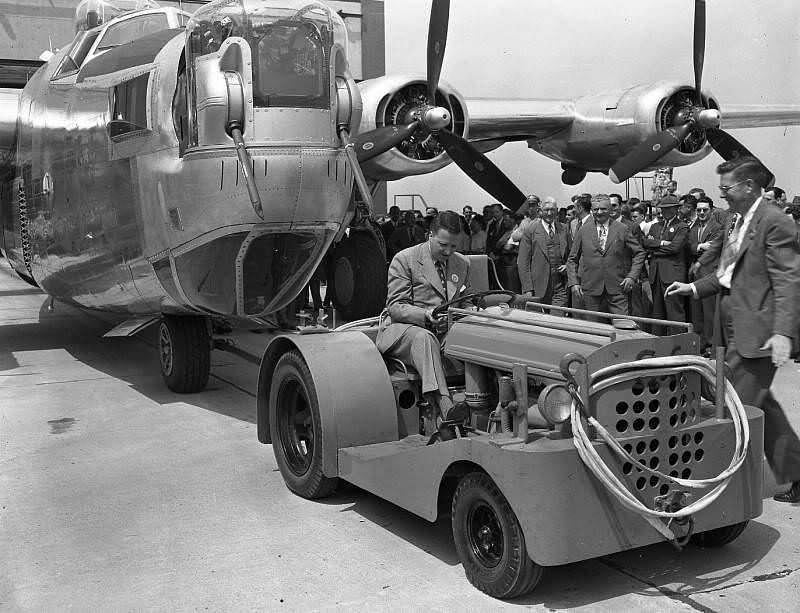
The One in Ohio…

The yellow one in the photo up above is kind of a mashup of sorts. The serial number stamped on the frame indicates that it’s a BN0-40, but it’s got a few differences from what you’d expect one to look like. Below is a photo of a factory-accurate restoration (or close to it).
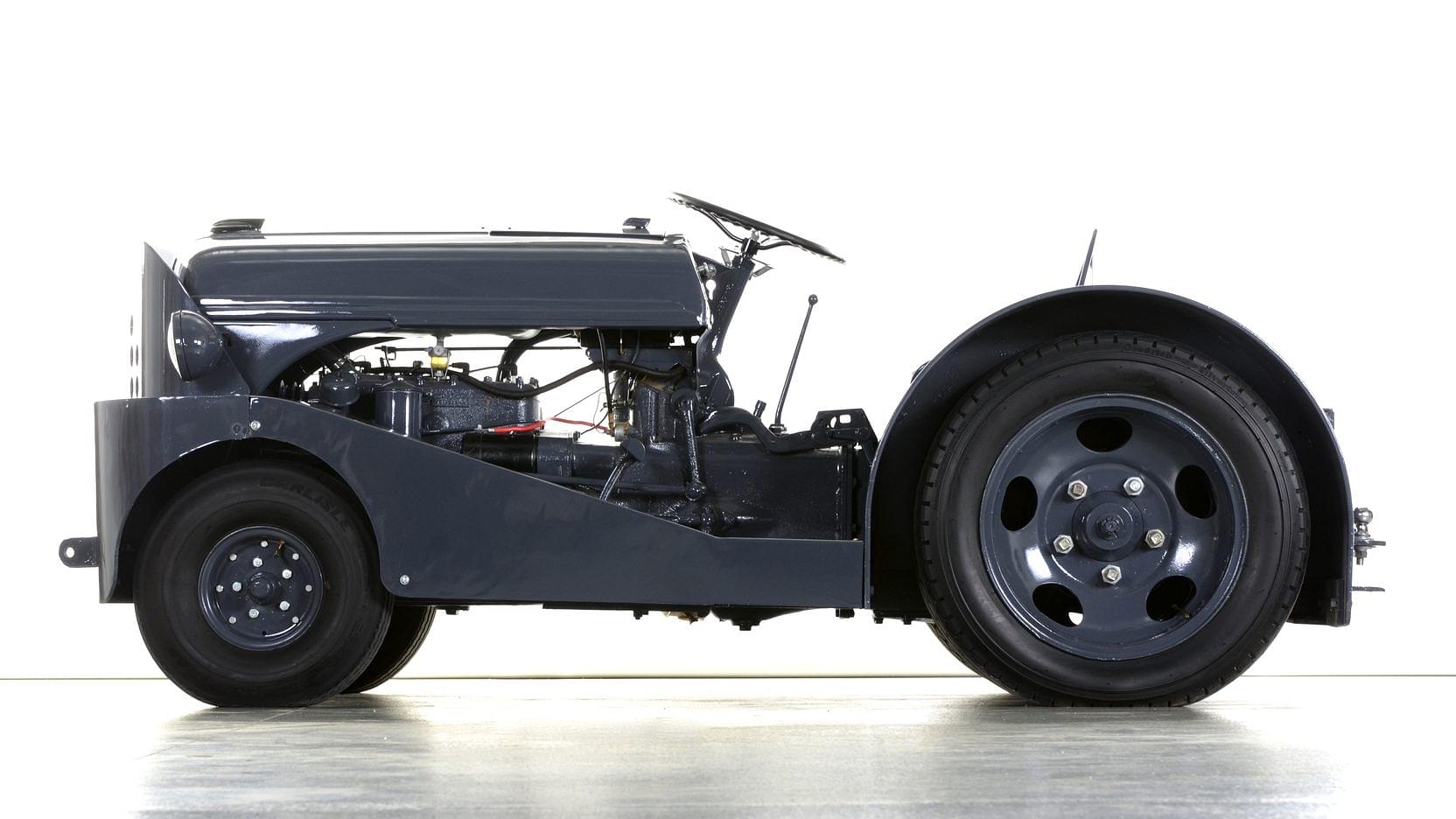
The two biggest differences that I can spot are that a) it’s missing the swoopy bodywork, and b) it’s not wearing duals on the back. There’s a few other things that aren’t quite what I expected to see with a military version, but for the most part, it’s all there. (It’s missing the full-sized rear ballast piece that normally sits between the fenders, too. In its place is what looks like a wooden toolbox.)
Why is it missing all of that stuff?
Ryan’s Theory…(take it with appropriate measures of salt)
I have a theory as to why this yellow one looks so different. Being that it lives in Waynesville, OH, it’s not far from Willow Run. There were a bunch of these Moto Tugs at the B-24 Liberator plant there, and when the war effort wound down in the late 40s, I think a lot of them were sold off as military surplus. I wouldn’t be one bit surprised to hear that a small municipal airport bought it. Furthermore, since crop dusters and small aircraft don’t weigh anywhere near what a bomber does, all that extra weight wasn’t necessary. In my head, it’s completely believable that the airport’s house mechanic (probably some guy named Marv) yanked parts off of it to save weight and make it more fuel-efficient.
(To put it in perspective, a Cessna 172 weighs less than 2,000 pounds fully loaded with fuel. Using a tractor built to move a thirty ton bomber to move one of those around is a little overkill, right? It’d be like putting a 9620RX on auger duty!) ????
Like I said, though, that’s just a theory. Take it with appropriate measures of salt! For what it’s worth, I did talk with Chris Simons, the auctioneer handling this sale, and he didn’t know what the story was either.
Wrapping up…
Without regard to whether or not it’s a complete factory-correct restoration, this is still a neat little piece of history. It also has one kind of fun little touch…the pre-cleaner glass jar has what appears to be a little bitty Farmall die cast in it. ????
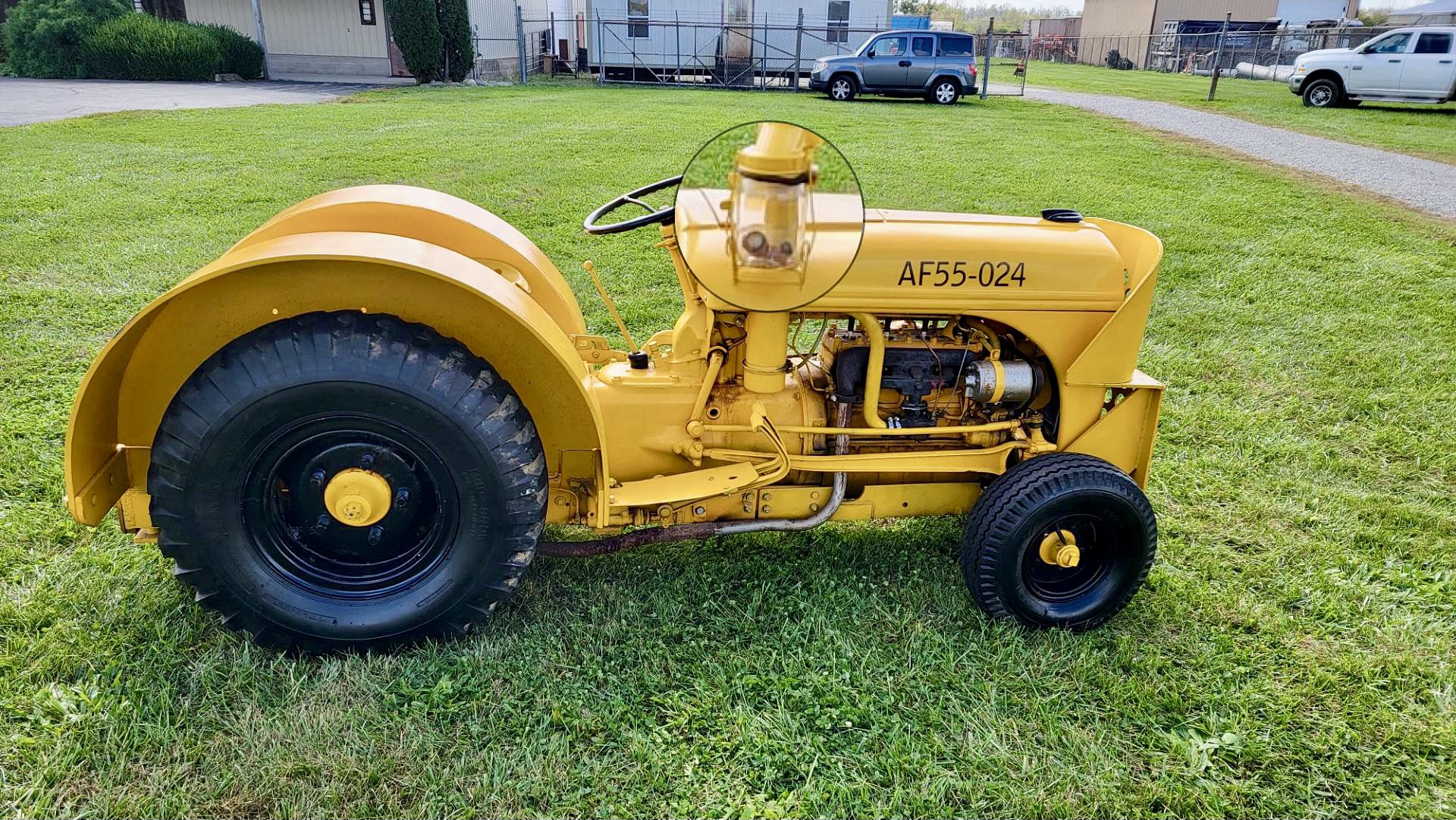
At the end of the day, the prevailing rumor is that there were about 10,000 of these little tractors turned out, but you’d be awfully hard-pressed to find another one these days. Some were sold off as surplus, but many were destroyed after the war. There are stories of these little tractors being rolled off the deck of aircraft carriers heading home from the war and buried at sea. Kind of a shame, don’t you think?
The market for these tractors is sort of limited, and I don’t think the final hammer price is going to set the world on fire. Since it’s not a complete factory-correct tractor, collectors may not give it much attention. There’s a plus side to that, though – it means that YOU might be able to pick it up for a few thousand bucks and have the most unique 8N on the block! Happy bidding!
Details:
Auction Date: Ends November 18, 2021
Location: Waynesville, OH
Auctioneer: Innovative Machine Solutions
Auction Listing on Tractor Zoom (all assets)





















